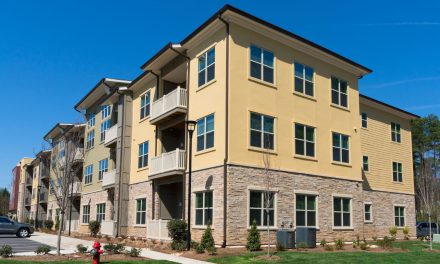California’s housing crisis continues to stretch households to their limits in 2019, impacting low-income renters the most.
The median asking rent in 2019 is $2,225. At this amount, a minimum wage worker needs to have 3.6 full time jobs to qualify to pay rent. This disparity is the result of rents rising much faster than incomes, ultimately due to a supply-and-demand imbalance.
Just how tilted is the imbalance? The California Housing Partnership (CHP), a state-created organization to advocate for and preserve affordable housing, lays out the enormity of the issue in a recent report.
California is short 1.4 million housing units to meet the demands of the very-low- and extremely-low income population. There are roughly 2.1 million renter households limited by very low or extremely low incomes. In contrast there are just about 700,000 housing units with suitably low rents, according to the CHP report.
Further, residential construction is slow to catch up. In 2018, roughly 116,000 new residential housing units were started across the state — better than no construction, but equal to just 8% of the low-income housing shortfall. When considering only a fraction of these units are suitable for low-income households, the number of homes still needed to house the low-income population grows.
For real estate professionals, the low-income rental crisis spills over to impact all segments of the housing market. Renters spending more than half of their income on rent have no income available to set aside in savings. Unable to save up for down payments or improve their financial situations, the vast majority of the state’s low-income renters will never be able to become homeowners.
State legislative efforts fall short
Legislators in California are well aware of the housing shortage and its negative impact on residents. Since 2017, dozens of new laws have been introduced to encourage the construction of housing units for low- and moderate-income households. These have included:
- directing local governments to update their local affordable housing plans;
- removing various California Environmental Quality Act (CEQA) requirements for homeless shelters and low-income housing projects;
- encouraging local governments to re-zone for more growth; and
- sidestepping local not-in-my-backyard (NIMBY) advocates who prevent dense, affordable housing projects from being built.
But is it enough?
Not by a long shot. A deeper, systematic change is needed to support California’s low-income population. Where to start? One instance ripe for disruption is the tax code.
California spends 14 times as much money to subsidize each homeowner household ($879) than each renter household ($64), according to the CHP. This is due primarily to greater and higher homeowner tax credits, including the mortgage interest deduction (MID) and property tax deductions, compared to the significantly lower renter tax credit.
Rather than rewarding homeowners, the housing market would benefit more from helping renters become homeowners by enabling saving. One potential law being considered in California’s Assembly is AB 1317, which would exclude from taxable income any money deposited into a homeownership savings account for renters to save up to purchase their first residence. Another bill, AB 399, increases the renter’s tax credit.
Big changes are needed to address what has become a massive housing problem. California’s housing crisis needs to be tackled on multiple fronts, including building sufficient low-income housing and making tax changes that help renters.















In today’s life everything has become a crisis which most of the time is created by ourselves. The main reason that there is an imbalance in housing is because of COST. When an investor purchases a property with the intention of developing (or re-developing), it may take years or it might never happen. This is because of the time and money invested to get the government approvals, the fees, fees, and more fees, restrictions and more restrictions, carrying costs, and resident concerns. In summary, by the time the project gets final approval the cost has skyrocketed and often makes the project prohibitive.
It is not unusual for a proposed project to be on the drawing board for 10+ years; during that time it is not uncommon for two investors to go bankrupt, and finally the project gets completed, reflecting a very high price tag (either renting or selling). Just imagine an investor planning a project in the summer. Immediately the municipality feels that Xmas has arrived early; they want fees, they create new fees, and the community wants less density (the “not in my backyard” ideology).
All these facts translate into no motivation or intention to develop affordable housing, only high end real estate. Historically we have seen that tax relief has good intentions but in the long run they do not work.
While the author did not come out and say it, it seems that she is against the mortgage interest deduction (MID) and some how equates this deduction to the low income housing shortage. Nothing could be further from the truth. The housing shortage is due to intrusive state government regulations and their high fees. Make it easier for developers to build thus assuring some profit on construction and you will find the supply imbalance takes care of itself due to the normal market process.